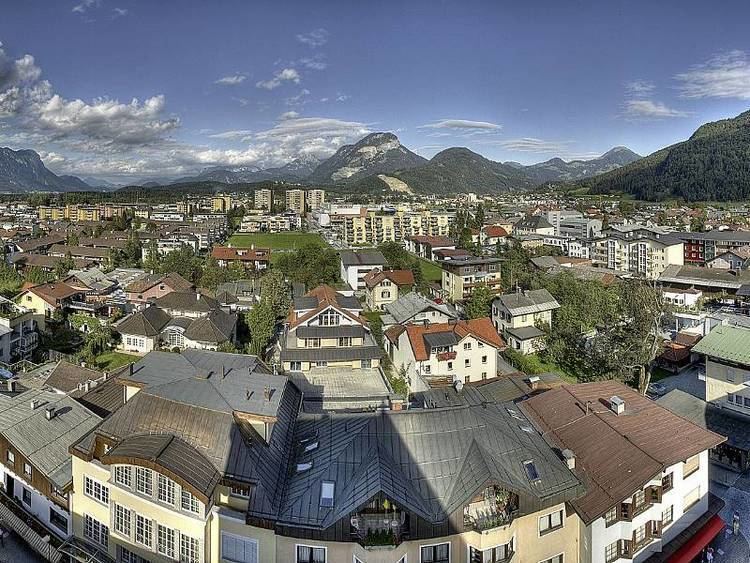District Kufstein Postal codes 6300-6302 Elevation 511 m Local time Thursday 8:33 PM | Time zone CET (UTC+1) Area codes 043-5332 Population 13,048 (2015) | |
 | ||
Weather 7°C, Wind NE at 8 km/h, 63% Humidity | ||
Wörgl is a city in the Austrian state of Tyrol, in the Kufstein district. It is 20 km from the state border with Bavaria.
Contents
- Map of WC3B6rgl Austria
- Transport
- World War II
- Twin cities
- The Wrgl Experiment
- Notable personalities
- References
Map of W%C3%B6rgl, Austria
Transport
Wörgl is an important railway junction between the line from Innsbruck to Munich, and the inner-Austrian line to Salzburg. Its railway station has been designated as a Hauptbahnhof (German: main station) since 10 December 2006.
European route E641 connects Wörgl with Salzburg, the routes E45 and E60 (Austrian autobahn A12) pass through Wörgl.
World War II
Nearby Itter Castle was the site of one of the last European and most unusual battles of World War II. The Battle for Itter Castle was fought on May 5, 1945 by surrendered Wehrmacht troops, the United States Army, Austrian Resistance fighters and former French political prisoners against the 17th Waffen-SS Panzer Grenadier Division. The leader of the surrendered Wehrmacht troops, Major Josef "Sepp" Gangl, was killed during the battle and is buried in Wörgl's municipal cemetery. A street in the city is named for Sepp Gangl.
Twin cities
The Wörgl Experiment
Wörgl was the site of the "Miracle of Wörgl" during the Great Depression. It was started on July 31, 1932, with the issuing of "Certified Compensation Bills", a form of currency commonly known as Stamp Scrip, or Freigeld. This was an application of the monetary theories of the economist Silvio Gesell by the town's then-mayor, Michael Unterguggenberger.
The experiment resulted in a growth in employment and meant that local government projects such as new houses, a reservoir, a ski jump and a bridge could all be completed, seeming to defy the depression in the rest of the country. Inflation and deflation are also reputed to have been non-existent for the duration of the experiment.
Despite attracting great interest at the time, including from French Premier Edouard Daladier and the economist Irving Fisher, the "experiment" was terminated by the Austrian National Bank on September 1, 1933.
In 2006 milestones were placed, beginning from the railroad station through the downtown, to show this history.
